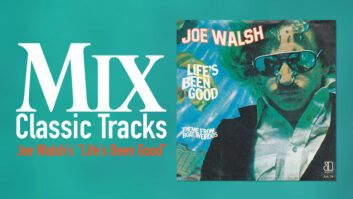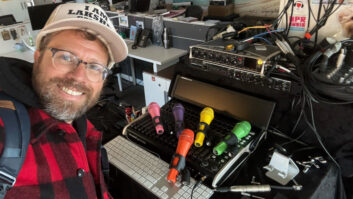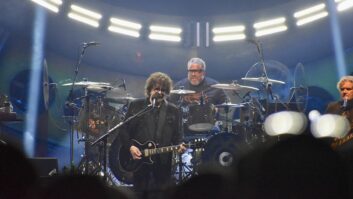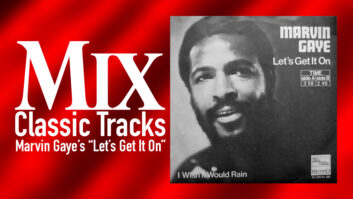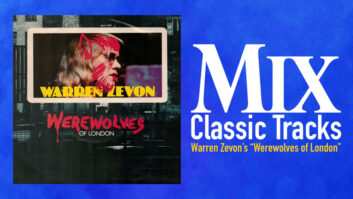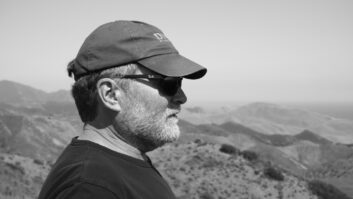Electronic music pioneers recently brought their eight-night 3D sound and vision installation, The Catalogue 1 2 3 4 5 6 7 8, to the Walt Disney Concert Hall in Los Angeles as part of the Minimalist Jukebox Festival. Ralf Hütter and Florian Schneider started their Kraftwerk multimedia project in 1970, setting up the innovative Kling Klang Studio in Düsseldorf, Germany, where they composed and produced all of the band’s albums. Over the years, Kraftwerk has continued to push the boundaries of audio and visual technology, in the process introducing electronic music to a worldwide audience and inspiring numerous artists and musical styles.

In late 2009, Kraftwerk released The Catalogue 1 2 3 4 5 6 7 8, featuring remastered versions of its eight concept albums: Autobahn (released 1974), Radioactivity (1975), Trans Europe Express (1977), The Man-Machine (1978), Computerworld (1981), Techno Pop (1986), The Mix (1991) and Tour de France (2003). In early 2012, the Museum of Modern Art in New York presented the Kraftwerk – Retrospective 1 2 3 4 5 6 7 8, where those albums were performed in chronological order, one each night. Demand was so overwhelming that the ticketing servers crashed.
No doubt inspired by the response, Kraftwerk have continued to perform similar residencies at art museums and concert halls worldwide. In 2013, it presented The Catalogue 1 2 3 4 5 6 7 8, a 3D sound and vision installation, at Kunstsammlung Düsseldorf, Tate Modern London, Akasaka Blitz Tokyo and Sydney Opera House.
This year, Hütter and former partner Schneider were honored with a Grammy Lifetime Achievement Award, and in mid-March, Kraftwerk kicked off the L.A. Phil’s Minimalist Jukebox Festival at the Walt Disney Concert Hall in Los Angeles. In mid-May, Vienna’s Burgtheater will host the German language version, Der Katalog 1 2 3 4 5 6 7 8.
The eight-day Catalogue residencies offer sufficient time for the band’s technical team to rig a more complex sound system to complement the 3D visuals (one-off shows and short runs utilize a stereo rig with a cardioid subwoofer setting). But while the Catalogue PA setup might be described as immersive, “I would use the phrase ‘spatial sound system,’ because we really don’t use the third dimension,” says Ralf Zuleeg, head of education and application support for d&b audiotechnik, the German loudspeaker systems and electronics manufacturer. 3G Productions supplied the system, which Zuleeg designed.
Zuleeg has been evangelizing for an evolution of concert PA systems away from the traditional left-right stereo configuration for some time. “It’s about time to think about something else,” he says. “Here, we’re really able to position a virtual band onstage. It’s not like everybody in the room has exactly the same image or the same sound, but the perspective of the band remains the same. We call it democracy for listeners.”
The PA system at the Walt Disney Concert Hall featured five main hangs, equidistantly spaced above the stage, each comprising four d&b V12 three-way arrays plus two V8 three-way boxes. A single two-way Q10 per side supplied out-fill while nine Q10s provided near-front fill from under the stage lip.
The subs arrayed below the stage were optimized using d&b’s Array- Calc simulation software, says Zuleeg. “We use delays to adjust the directivity. In the center, we have the eight V-Subs, with five feet of space between the sources. On the very outside, we have the triple-21-inch J-Infra subwoofers.”
Along the length of the hall, which was designed by acoustician Yasuhisa Toyota with “vineyard” seating, one hang per side, each comprising four two-way T10 cabinets in line array mode, covered the front terrace. There were two additional arrays of four T10s per side, in point source mode, for the side terrace seating. One hang of five T10s, also in point source mode, covered the lower terrace rear. Four hangs of four T10 cabinets in line array mode provided coverage for the balcony rear. A total of 24 four-channel D80 amplifiers with DSP, housed in five racks, provided power to the entire system, which also included eight M4 two-way stage monitors for the band.
The improved control due to the D80’s power factor correction is critical to the speaker system’s performance, especially the definition in the low frequencies, says Zuleeg. “It always delivers the current to the loudspeakers that is required.”
The Kraftwerk Krew (l-‐r): Front of house engineer Stefan “Serge” Gräfe; programming/ network manager Felix Einsiedel; and systems designer/spatial sound engineer Ralf Zuleeg. At the heart of the system is a Fraunhofer-based spatial processor that deliver 36 channels to the amplifiers over fiber, with a redundant analog backup. Felix Einsiedel, a freelance technician specializing in wave field synthesis and digital audio pathway management, programs the sources and speaker setups in the processor, and optimizes the movement of the sources, says Zuleeg.

“I programmed a bridge—middleware— for connecting interfaces,” says Einsiedel. “We use a standard iPad app, Lemur, which puts out MIDI and OSC. Then all the information about the positions of the sounds are sent to the processing system.”
Front of house engineer Stefan “Serge” Gräfe controls and monitors the spatial sound positioning using two iPads in conjunction with an Avid Venue mixing console. “We set up positions for all the sources that I send to the processor—the virtual sound sources—and store them into snapshots,” explains Gräfe. “I’m sending MIDI data. Right now, one show is about 150 snapshots. Every song has eight snapshots for positions, where the MIDI data is inside, and it’s linked in the Avid console. I use snapshots to change the interface view of the iPads, also.”
He makes extensive use of Waves plug-ins: “I’m using mostly H-EQ, C6 and L3, and voice-doubling effects. I love the Waves stuff because it does what I want and you can control it very easily and fast. I use the C6 for the voice; without it, it won’t sound the same. For reverbs, I’m using VSS3 from TC. There’s nothing better.”
Audio signals remains digital from the source to the output, traveling via fiber from a couple of RME MADIface XTs to a DirectOut Andiamo 2XT and AES to the amplifiers. “We distribute word clock from a [Rosendahl] NanoSync onstage,” says Gräfe, who also notes, “Only one synthesizer is analog, but it’s converted onstage, and the vocal— the output of the [wireless headset mic] transmitter is analog.”
Audience members, viewing the performance through 3D glasses, might be forgiven for suspecting that the four Kraftwerk operators, Ralf Hütter, Henning Schmitz, Fritz Hilpert and Falk Grieffenhagen, each standing behind his respective control podium, are checking their emails or playing Candy Crush. But as Kraftwerk founder Ralf Hütter commented in an interview with The Guardian newspaper in 2013, “We’re turning the knobs, we’re switching the switches and we’re fading the faders.”
Gräfe reports that Kraftwerk also controls the spatial positioning of certain sound elements: “One iPad shows me the actual positions in the snapshot that is recalled and what the musicians are sending from stage; they send MIDI data for position control also. The second iPad is for me to control some sources live or to fly them around. There’s also a control for a [Native Instruments] Reaktor-based delay.”
Not that anyone involved with the production wants sounds flying around all over the place all the time, of course. “It’s not only about putting things through space; it’s also about putting them where you want them,” stresses Einsiedel. “As a basic setup, we can distribute the sound around the space, which is really important. We need a lot of speakers for that, but it’s really working well so far.”
“The band is producing its music onto the system,” says Zuleeg. “They went back to the studio to rewrite, just to match the possibilities of this loudspeaker setup. They see things and listen, and immediately they have ideas. I would say no other band would have been able to take this on as quickly and make it happen.”
The choice of d&b speakers in such a spatial setup makes sense because of the company’s emphasis on directivity, according to Zuleeg. “We have a very controlled directivity over the entire bandwidth. This makes it possible to recreate the wavefront that is calculated by the processor. You have to have the same dispersion angles over the entire frequency range in order to get the same results. For a complex system like this, you have to have a system where all the different speakers you are using have the same voicing.”
Unfortunately, the choice of less conventional venues—for this type of music, anyway—has occasionally presented some challenges. “We started quite simply in Düsseldorf and London, where we had this perfect square and speakers all over the place,” Zuleeg recalls. But at the Sydney Opera House, the architecture limited speaker placement—as was also the case, although to a lesser extent, in L.A.
“It’s interesting to figure out how feasible it is to bring such a system on tour,” comments Zuleeg. “And to make it work, and to make it cope with the different situations you find in the various venues.”
It takes more resources, but it’s worth it, he believes. “We have to see if it’s feasible to bring trusses all the way into the hall. It’s a matter of the result versus the financial effort. It involves a little bit more money; it involves planning. But it is more realistic to do it than I thought in the very beginning. It’s just a matter of being willing to do it.”
3G Productions, Inc.
3glp.com
d&b audiotechnik
dbsound.com
VITALstats
Kraftwerk
3G Productions
(Las Vegas, NV/Los Angeles, CA)
FOH Engineer:
Stefan “Serge” Gräef
Systems Designer/Spatial Sound Engineer:
Ralf Zuleeg
Programming/Network Manager:
Felix Einsiedel
Production Manager:
Winfried Blank
Systems Tech:
Julio Valdez; Manny Perez; Jon Daly
Crew Chief:
Will Taylor
FOH Console:
Avid Venue
House Speakers:
d&b audiotechnik J-, Q-, T- and V-Series
Monitor Speakers:
d&b audiotechnik M-Series
House Amplifiers:
d&b audiotechnik D80
Monitor Amplifiers:
d&b audiotechnik D80
FOH Equipment/Plug-‐Ins:
Apple iPad (2); Fraunhofer-based spatial processor; Liine Lemur app; Native Instruments Reaktor; Waves C6, H-EQ, L3; TC Electronic VSS
